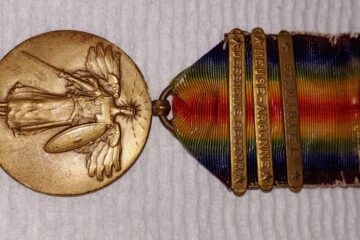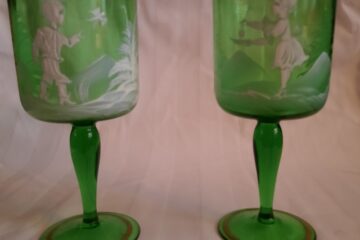Amber, often referred to as “fossilized sunlight,” has been treasured for thousands of years as both a gemstone and a material with mystical properties. Formed from the resin of ancient trees that has hardened over millions of years, amber is unique in its origin and offers collectors and enthusiasts a glimpse into Earth’s prehistoric past. Today, rare amber jewelry is highly prized not only for its natural beauty but also for its historical and cultural significance. Some pieces of rare amber jewelry can be worth thousands of dollars, depending on their age, quality, and inclusions.
What Makes Amber Jewelry Valuable?
Not all amber is created equal, and several factors contribute to the value of amber jewelry. Here’s what to consider when evaluating rare amber pieces:
1. Color and Transparency
- Color: Amber comes in a range of hues, from golden yellow to deep red and even blue. While the most common amber is honey-colored, the rarest and most valuable pieces exhibit unique shades. Blue amber, primarily found in the Dominican Republic, is particularly prized for its rarity and its ability to emit a blue glow in sunlight. Green amber and red amber are also more valuable than the common yellow varieties.
- Transparency: The clearer and more transparent the amber, the more valuable it tends to be. Clear amber allows light to pass through it, creating a luminous effect that enhances its beauty. Opaque or cloudy amber can still be valuable, but it is generally less sought after than transparent varieties.
- https://eartharchives.org/articles/trapped-in-time-the-top-10-amber-fossils/index.html
2. Inclusions
- Inclusions: One of the most fascinating aspects of amber is that it can contain ancient inclusions, such as insects, plants, and even small animals. Amber with well-preserved inclusions, especially rare or scientifically significant ones, can command a high price. For example, an amber pendant with a trapped prehistoric insect or plant life is not just a piece of jewelry—it’s a piece of history.
- Rarity of Inclusions: The type and condition of the inclusion matter. Inclusions of spiders, scorpions, and well-preserved flowers are rarer and more valuable than common insects like ants or mosquitoes.
3. Origin
- Baltic Amber: The most well-known and highly prized amber comes from the Baltic region. Baltic amber is over 40 million years old and contains a higher concentration of succinic acid, which gives it its therapeutic reputation. Pieces of jewelry crafted from Baltic amber tend to hold more value due to its rich history and superior quality.
- Dominican Amber: As mentioned, Dominican blue amber is incredibly rare and highly sought after. The Dominican Republic also produces some of the clearest and most transparent amber, often with striking inclusions. These pieces can be significantly more valuable than Baltic amber.
- Other Sources: Amber can also be found in places like Mexico, Myanmar (Burma), and even the United States. Each region produces amber with distinct characteristics, and rare types from these areas can also fetch high prices.
4. Craftsmanship and Design
- The value of amber jewelry is not just about the amber itself—it’s also about the craftsmanship and design of the piece. Antique or vintage amber jewelry that has been intricately carved, set in precious metals like gold or silver, or designed by well-known artisans can hold significant value.
- Historical or Antique Pieces: Amber jewelry that dates back to earlier periods, such as Art Deco or Victorianpieces, can be especially valuable due to the craftsmanship and age. Additionally, antique pieces may have historical significance that adds to their allure and price.
5. Condition
- Polish and Finish: Amber is relatively soft, with a hardness rating of 2–2.5 on the Mohs scale. This makes it susceptible to scratching and wear over time. Amber jewelry that has been well-maintained, with minimal damage or scratching, will be more valuable than pieces that show significant signs of wear.
- Restoration: Jewelry that has been repaired or restored might lose some value, especially if modern materials were used in the restoration process. Authenticity and originality are key factors for collectors of rare amber jewelry.
Notable Types of Rare Amber Jewelry
1. Amber with Large or Rare Inclusions
Amber with significant inclusions, such as larger insects (beetles, moths) or rare creatures like small lizards or frogs, is incredibly valuable. The larger and more visible the inclusion, the higher the value, especially if it is well-preserved and clearly visible.
- Value: Amber pieces with high-quality inclusions can fetch anywhere from $500 to $10,000 or more, depending on the inclusion’s rarity and visibility.
2. Antique Amber Jewelry
Antique pieces, particularly those from historical periods like the Victorian era or Art Deco movement, are highly sought after. Victorian amber jewelry often features intricate metalwork, while Art Deco designs emphasize geometric shapes and bold, artistic styles.
- Value: Depending on the condition and intricacy of the piece, antique amber jewelry can range from $1,000 to $20,000 or more.
3. Amber Cameos and Carvings
Amber has been carved into cameos and other intricate designs for centuries. These pieces often feature images of classical figures, floral motifs, or animals and were popular during the 19th and early 20th centuries.
- Value: Amber cameos and carved pieces, especially those with historical or artistic significance, can be worth between $500 and $5,000.
4. Rare Colored Amber Jewelry
As mentioned, the most valuable amber colors are blue, green, and red. Blue amber, which is highly fluorescent and glows under sunlight or UV light, is among the rarest and most expensive. Green amber, though more common than blue, is still considered rare and valuable. Red amber, sometimes called “cherry amber,” is prized for its deep, vibrant hue.
- Value: Blue amber can command prices of $5,000 to $20,000 for high-quality pieces, while green or red amber pieces may sell for between $1,000 and $10,000.
5. Amber Beads
Beaded amber necklaces are classic pieces of jewelry that have been worn for centuries. Large, perfectly spherical beads or unusual shapes like teardrops or ovals can add to a piece’s rarity. Antique amber bead necklaces from the Baltic region are particularly valuable, especially if the beads are large, uniform, and in good condition.
- Value: High-quality amber bead necklaces can range from $1,000 to $15,000 or more, depending on the size and quality of the beads.
How to Determine the Value of Amber Jewelry
If you own amber jewelry and want to determine its value, here are some steps you can take:
- Examine the Amber: Check for color, clarity, and any inclusions. Use a magnifying glass to observe the detail of any inclusions.
- Test for Authenticity: Genuine amber is lightweight, warm to the touch, and may emit a pine-like scent when rubbed or heated. Counterfeit amber is often made from plastics or resins and can feel colder and heavier.
- Consider the Age: Antique amber jewelry is more valuable than modern pieces, particularly if it comes from a recognized historical period or designer.
- Get a Professional Appraisal: For rare or high-value pieces, it’s best to have the jewelry appraised by a gemologist or antique jewelry expert who specializes in amber.
Where to Buy and Sell Rare Amber Jewelry
- Specialized Jewelers: Many jewelers and gem specialists focus on rare amber pieces. Look for those who have a history of dealing with antique and collectible jewelry.
- Auctions: Major auction houses, like Christie’s or Sotheby’s, often feature amber jewelry in their sales. Online auction platforms like eBay or Catawiki also offer a wide selection of amber jewelry.
- Antique Shows: Visiting antique fairs or shows can be a great way to find rare amber jewelry and connect with dealers who specialize in these items.
Conclusion
Rare amber jewelry offers a unique combination of natural beauty, historical significance, and scientific curiosity. Whether it’s a piece with a prehistoric insect inclusion, an antique cameo, or a modern blue amber ring, these gemstones continue to captivate collectors and enthusiasts. Prices for rare amber jewelry can range from a few hundred dollars to tens of thousands, depending on factors like color, clarity, inclusions, and craftsmanship. For those interested in collecting or investing, amber remains a fascinating and valuable part of the world of gemstones and jewelry.



0 Comments